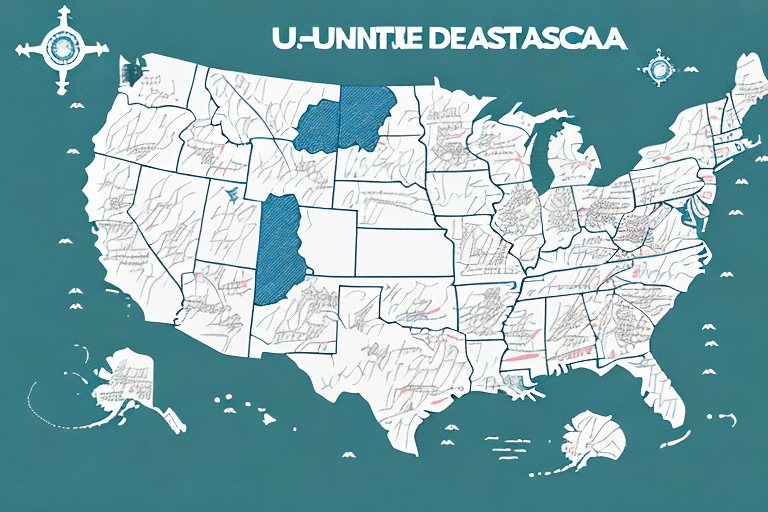Comparing Shipping Rates for Large Packages: USPS vs UPS vs FedEx
If you’re looking to ship large packages, choosing the right shipping provider is crucial to ensure that your package is delivered safely and on time. However, with so many options available, it can be challenging to decide which provider offers the best rates and services. In this article, we will compare the shipping rates of three of the most popular shipping providers in the United States: USPS, UPS, and FedEx. We will also explore the various factors you need to consider when choosing a provider, including transit times, delivery guarantees, customer service, and insurance options.
Factors to Consider When Shipping Large Packages
Before we delve into the specifics of each provider, let's first examine some of the key factors you need to consider when shipping large packages:
- Size and Weight: The size and weight of your package play a significant role in determining the cost of shipping. Accurate measurements and weights are essential.
- Distance: The distance your package needs to travel affects both the transit time and the shipping cost.
- Service Type: Options range from standard ground shipping to expedited services. Expedited shipping or guaranteed delivery often comes at an additional cost.
- Fragility: If your package contains delicate items, specialized packaging and handling services may be necessary to ensure safe delivery.
- Customer Service and Support: Responsive customer service can be vital if issues arise during the shipping process.
- Insurance Options: Protecting your package against damage or loss is essential, especially for valuable items.
- Environmental Impact: Consider providers that offer eco-friendly shipping options to reduce your carbon footprint.
Additionally, familiarize yourself with the destination country's customs regulations and restrictions to avoid any legal issues or delays.
USPS Shipping Rates for Large Packages: How They Stack Up
The United States Postal Service (USPS) is a popular option for shipping large packages, often offering competitive rates compared to other providers. USPS employs a zone-based pricing system, meaning the cost of shipping depends largely on the distance your package needs to travel. Factors such as the package's weight, dimensions, and shape also influence the cost.
However, there are some limitations to consider. USPS has strict package size restrictions, which may limit the shipment of particularly large items. Additionally, their tracking capabilities, while reliable, might not be as comprehensive as those offered by UPS or FedEx. Notably, USPS does not provide guaranteed delivery options for ground shipping, which could be a drawback for time-sensitive shipments.
Despite these limitations, USPS remains a cost-effective choice for many. They offer various shipping options, including Priority Mail and Priority Mail Express, which provide faster delivery times for an additional fee. Moreover, USPS offers free package pickup services, adding convenience for both businesses and individuals. According to recent data, USPS handles over 40% of all domestic shipments, underscoring its reliability and widespread use.
UPS Shipping Rates for Large Packages: What You Need to Know
United Parcel Service (UPS) is renowned for its expertise in handling large and heavy shipments. UPS utilizes a weight-based pricing system, where the shipping cost is primarily determined by the package's weight. Additionally, UPS imposes extra fees for oversized packages or those requiring special handling.
UPS offers a diverse range of delivery options, from standard ground shipping to expedited air freight services. They provide guaranteed delivery options, ensuring that time-sensitive packages arrive by a specified date. UPS’s advanced tracking system allows customers to monitor their packages throughout the entire shipping process, providing peace of mind and transparency.
However, UPS rates are generally higher than those of USPS, making it less ideal for budget-conscious shipments. According to the 2023 shipping industry report by Statista, UPS commands approximately 35% market share in the U.S., reflecting its strong position in the logistics sector.
FedEx Shipping Rates for Large Packages: A Comprehensive Guide
FedEx is another leading provider offering a wide array of shipping options tailored to large packages. Like UPS, FedEx employs a weight-based pricing model, with additional fees for oversized or specially handled packages.
FedEx provides various delivery services, including ground shipping and air freight, along with guaranteed delivery options to meet specific needs. Their tracking capabilities are more extensive compared to USPS, allowing for real-time updates and enhanced package monitoring.
Despite the comprehensive services, FedEx tends to be more expensive than USPS. However, competitive rates for heavy or long-distance shipments make it a viable option for certain customers. FedEx holds around 20% of the U.S. shipping market, based on recent industry analyses.
Which Shipping Provider Offers the Best Rates for Large Packages?
Determining the best shipping provider for large packages depends on your specific needs and circumstances. Generally, USPS offers the lowest rates for large packages, especially for shorter distances. Conversely, UPS and FedEx may provide more competitive rates for larger or heavier packages and long-distance shipments.
To identify the most cost-effective option, compare rates from each provider while considering the size, weight, and distance of your package. Don’t forget to include any additional fees or surcharges, as these can significantly impact the total cost. Utilizing online shipping calculators provided by each carrier can aid in this comparison.
How to Select the Most Cost-Effective Shipping Option for Your Large Package
When selecting a shipping provider, it’s essential to balance cost with the level of service and support offered. Here are steps to find the most cost-effective option:
- Determine Your Delivery Timeline: Establish how quickly your package needs to arrive.
- Assess Special Requirements: Identify any special handling or insurance needs.
- Compare Rates: Use shipping calculators to compare rates from multiple providers.
- Factor in Additional Fees: Consider any extra costs for oversized packages, residential delivery, or expedited services.
- Evaluate Customer Service: Research the provider’s reputation for customer support.
- Read Reviews: Consult reviews or seek recommendations from others who have used the providers.
By methodically evaluating these factors, you can select a shipping option that offers the best value for your large package.
An Overview of Additional Fees and Surcharges Associated with Shipping Large Packages
Shipping large packages often incurs additional fees beyond the base shipping rate. Common surcharges include:
- Oversize Fees: Charged for packages that exceed standard dimensions.
- Heavy Package Fees: Applied to shipments weighing over a certain threshold (e.g., 70lbs).
- Residential Delivery Surcharge: Extra fee for deliveries to residential addresses.
- Special Handling Fees: For packages requiring fragile handling or other special services.
For example, both UPS and FedEx impose additional charges for packages heavier than 70lbs or longer than 48 inches on their longest side. USPS also applies extra fees for oversized or non-machinable packages. It’s crucial to account for these surcharges when budgeting for your shipment to avoid unexpected costs.
Tips and Tricks for Saving Money on Shipping Costs for Your Large Package
Reducing shipping costs for large packages can be achieved through several strategies:
- Optimize Packaging: Use appropriately sized packaging to minimize size and weight, avoiding unnecessary fees.
- Compare Providers: Regularly compare rates between different carriers to find the best deal.
- Use Shipping Calculators: Utilize online tools to estimate and compare shipping costs accurately.
- Consolidate Shipments: Bundle multiple items into a single shipment to reduce overall expenses.
- Leverage Discounts: Take advantage of available discounts or promotional offers from shipping providers.
Implementing these tips can lead to significant savings on your shipping expenses, making large package shipments more affordable.
Understanding the Transit Times and Delivery Guarantees Offered by Each Provider
Transit times and delivery guarantees vary significantly among USPS, UPS, and FedEx. Understanding these can help you make informed decisions:
- USPS: Generally offers slower transit times, especially for larger or heavier packages. However, services like Priority Mail Express provide expedited options for faster delivery.
- UPS: Provides a range of delivery options, including next-day and two-day delivery services. UPS’s Guaranteed Delivery options ensure packages arrive by a specified time.
- FedEx: Similar to UPS, FedEx offers various transit speeds, including overnight and two-day shipping. Their FedEx Priority Overnight service guarantees next-business-day delivery.
If your package is time-sensitive, UPS or FedEx may be more suitable despite their higher costs. USPS remains a viable option for less urgent shipments due to its affordability.
Customer Service and Support: Which Provider Offers the Best Experience?
Effective customer service and support are essential when shipping large packages. Here’s how USPS, UPS, and FedEx compare:
- USPS: Customer service can be accessed via their online help center and email support. However, reaching customer service by phone can sometimes be challenging.
- UPS: Offers comprehensive customer support through phone, email, and an extensive online help center.
- FedEx: Provides robust support options, including phone, email, live chat, and social media support channels.
Both UPS and FedEx receive high marks for their responsive and accessible customer service, which can be crucial if issues arise during the shipping process.
Comparing Insurance Options for Shipping Large Packages with USPS, UPS, and FedEx
Insuring your package is vital, especially if it contains valuable or fragile items. Here’s a comparison of insurance options offered by each provider:
- USPS: Includes basic insurance coverage for all packages, with the option to purchase additional coverage for an extra fee.
- UPS: Offers various levels of insurance coverage, including declared value options that provide higher protection at an additional cost.
- FedEx: Provides extensive insurance options, allowing customers to declare a higher value for their shipments based on their needs.
When choosing insurance, carefully review the terms and conditions to ensure the coverage meets your requirements. Higher coverage levels typically come at an increased cost but offer greater protection against loss or damage.
Case Study: A Real-Life Comparison of Shipping Rates for a Large Package with USPS, UPS, and FedEx
To illustrate the differences in rates and services offered by each provider, let's consider a real-life example. Imagine you need to ship a 50lb package from New York City to Los Angeles, with dimensions of 24x24x24 inches. Here are the estimated rates for each provider:
- USPS Ground: $103.55
- UPS Ground: $131.63
- FedEx Ground: $135.30
As demonstrated, USPS offers the lowest rates for this package, making it a cost-effective choice for non-urgent shipments. However, if you require guaranteed delivery or expedited service, UPS or FedEx might be more appropriate despite their higher costs.
Conclusion: How to Make an Informed Decision When Choosing a Shipping Provider for Your Next Big Shipment
When it comes to shipping large packages, numerous factors must be weighed, including size, weight, transit times, delivery guarantees, customer service, and insurance options. By thoroughly comparing rates and services from USPS, UPS, and FedEx, and considering your specific needs and budget, you can make an informed decision. Additionally, leveraging tools like shipping calculators and staying informed about each provider’s latest offerings will help you choose the best shipping solution for your next big shipment.








